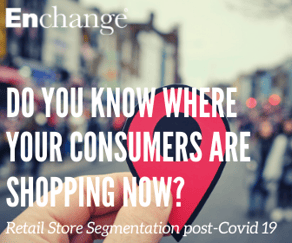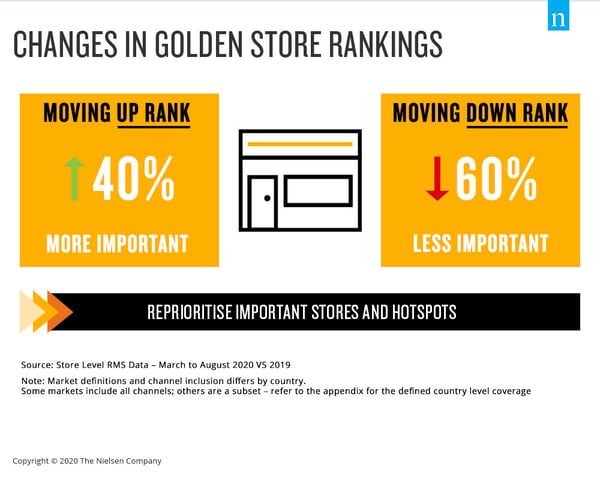The Pareto Principle, or the 80/20 rule, states that for many phenomena 80% of the result comes from 20% of the effort. This principal is often applied in business, and for good reason, it works. Targeting our effort and resource where it will have the greatest impact is what every commercial leader tries to do.
 Let us convert this into an FMCG example. Imagine there are 100 retail outlets in a country. If 20 of those retail outlets accounted for 80% of your sales, which is often the case, what would you do? You would of course focus you time, effort, and resource on those 20 stores. You might rank or order them based on, for example, sales volume, market share, foot fall, location, consumer profile, size, store format, channel, shopper behaviour, etc. Then you might take these rankings and break them into separate groups like A, B or C, maybe even into Gold, Silver and Bronze stores. Then you would treat these Gold, Silver and Bronze stores in different ways, assigning different resourcing, promotions, pricing, assortments, etc. This is known as Retail Outlet or Store Segmentation.
Let us convert this into an FMCG example. Imagine there are 100 retail outlets in a country. If 20 of those retail outlets accounted for 80% of your sales, which is often the case, what would you do? You would of course focus you time, effort, and resource on those 20 stores. You might rank or order them based on, for example, sales volume, market share, foot fall, location, consumer profile, size, store format, channel, shopper behaviour, etc. Then you might take these rankings and break them into separate groups like A, B or C, maybe even into Gold, Silver and Bronze stores. Then you would treat these Gold, Silver and Bronze stores in different ways, assigning different resourcing, promotions, pricing, assortments, etc. This is known as Retail Outlet or Store Segmentation.
It is critical to conduct Retail Store Segmentation in the consumer goods business. Everything in our world is about targeted execution, maximising resources and generating sales. These ‘Gold’ stores, that account for 80% of your sales are as precious as their name suggests. They require significant attention and special treatment.
The difference between winning and losing in a marketplace depends on how these Gold stores are treated.
How often should you conduct Retail Store Segmentation?
This is a good question, and the answer depends on several factors; for example, how dynamic your marketplace is, how competitive it is, how often prices change, how many launches in your sector, levels of switching among consumers, changes in consumer habits, what your research and intel is showing, to name a few. If there is any major change in the market, you need to conduct Retail Store Segmentation again.
So, what effect has COVID had on the FMCG environment?
The short answer is that COVID has had a monumental effect on consumer movements. Here are a few of these changes:
- There are significantly less people in urban and crowded areas.
- Many people are working from home or are furloughed.
- People are not commuting to work, or numbers commuting have greatly reduced.
- People are staying out in the city suburbs, or in some cases, going back to a family home in different locations.
- People are not traveling or moving around as much.
- People are now shopping either online or in different locations today than they did in the past.
- In summary, many habits are changing, shifting and new habits are forming. Anecdotally most of us can see this happening.
The numbers are staggering. Online sales grew by 36% in 2020 according to retail association IMRG. Some reports show 1 million less consumers in central Paris and 1.5 million less in London. Some studies show city footfall levels down 45%. During March to August 2020, Nielsen measured sales at store level across 15 countries which showed that within the ‘Golden Stores’, those that account for 80% of sales, 40% of stores moved up in ranking and became more important, and 60% moved down in ranking and became less important. The scale of change in cities was phenomenal. For example, sales in Manhattan stores fell almost 40%.

If your Route to Market strategy has not taken account of these changes, you are focusing in the wrong areas.
How many of these changes or shifts in consumer behaviour will be permanent?
This is a question to which we simply do not yet know the answer. What we do know and understand is the make-up of the retail environment pre COVID, and that there has been a huge shift recently.
Can we assume that our current well considered Route to Market Strategy will protect us?
- You may have an amazing Distribution Strategy.
- You may even have been diligently reviewing or assessing your Route to Market and distribution partners, which may also mean that they are excellent.
- You may also be playing in the correct Channels,
- However, and this is key, who is responsible in determining if you are servicing the right retail outlets with the correct resources? The only real answer is the FMCG Company, and it needs to be done now.
FMCG leaders need to watch, monitor, and adjust to these shifts in consumer behaviour. One of the most important ways to target your Route to Market investment and execution resources, will be through regular Retail Store Segmentation.
What should you do now?
- If you need specific help on Retail Store Segmentation or any RtM issue, please reach out to me
- You may want to use our 20 Steps to Route to Market Excellence model to give you inspiration on your RtM journey.
- As we always say at Enchange, NOW is the time to be reviewing, building and/or transforming your RtM Strategy and Execution to reap the rewards. Do not wait. Feel free to use our 20 Steps to Route to Market Excellence Implementation Guide to help you.







